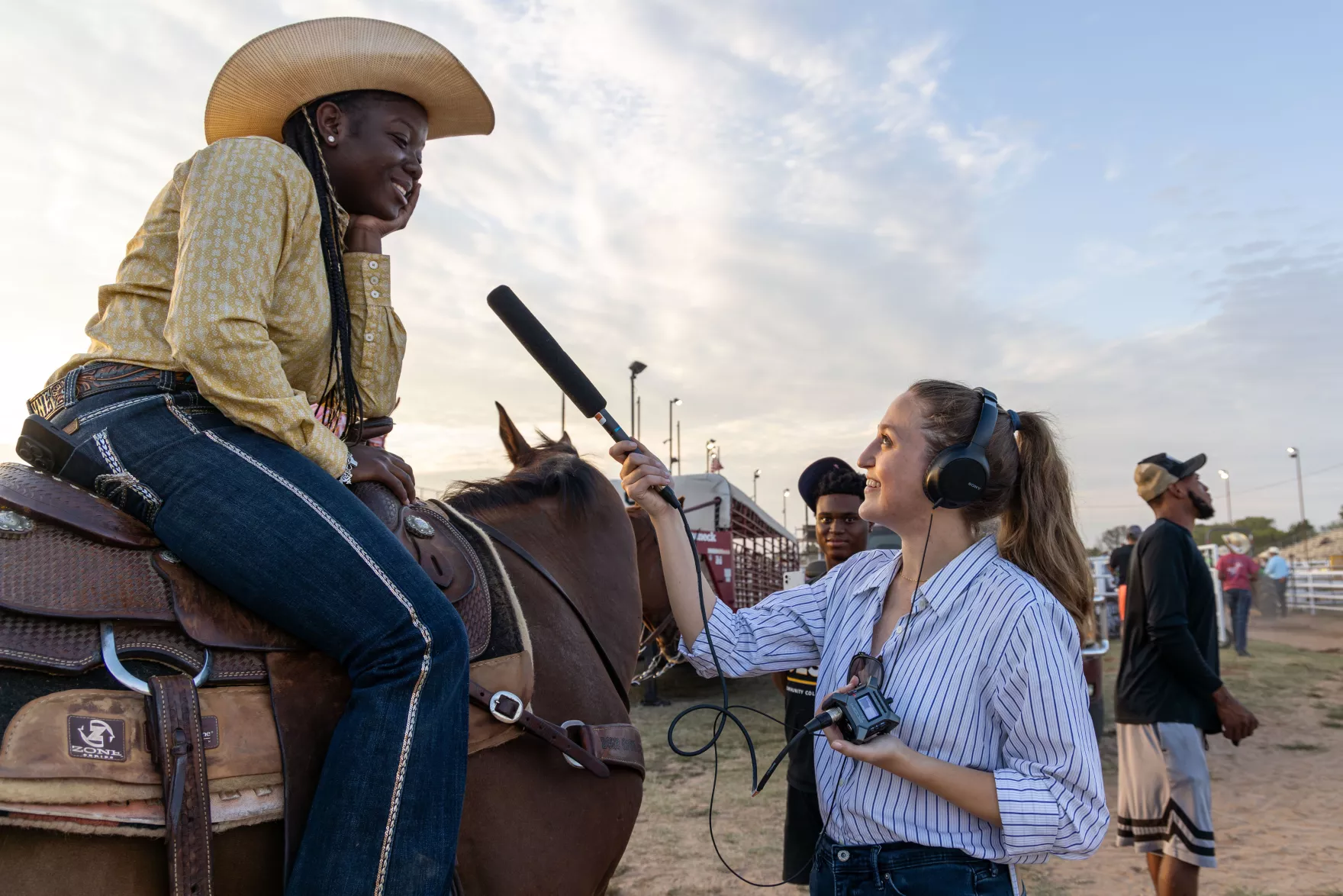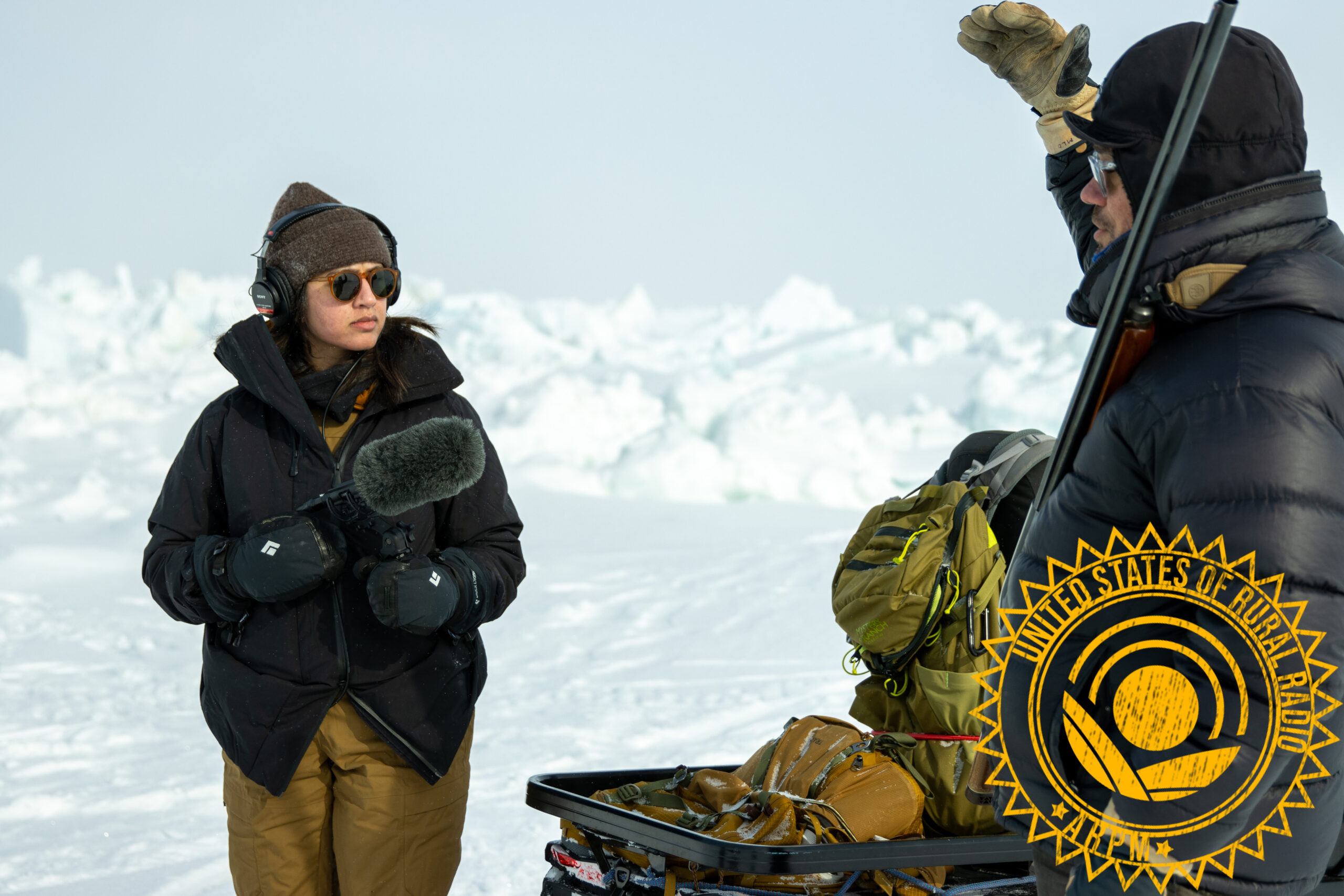
Across the state, stations partner and share resources to better their commitment to their communities, supporting even the most rural areas with deeply reported journalism.
In the vast and often remote state of Alaska, where communities are separated by rugged terrain and harsh weather, public radio is more than just a source of entertainment — it’s a lifeline. This essential service is particularly evident throughout the state, where stations and public media organizations practice a unique kind of media collaboration keeping communities informed, connected, and resilient.
Alaska’s public radio network is a tapestry of both formally partnered stations and individual stations with informal relationships working with nearby stations and teams across the state. Each station is deeply embedded in its local community, yet working together to serve a larger mission. Cindy Sweat, General Manager of KSTK, has experienced firsthand the challenges and rewards of operating a station in a remote area like Wrangell, located on an island in Alaska Panhandle. “KSTK is really the hub of the community,” Sweat says. “Whether we’re reporting news that’s relevant and important to people or providing opportunities for businesses to support the station, it’s all about serving our community.”
This sense of responsibility drives KSTK and other rural stations to maintain their vital connection with listeners, despite the geographic and financial hurdles. Sweat, who started her career at the station as a development director before becoming the manager, knows how crucial this role is. “In these small rural communities, we’re probably not going to get a graduate with a degree in a particular area. We’re going to pull from our existing population and then train them,” she explains. That grassroots spirit doesn’t take away from expertise though. “We generally hire reporters from outside of Wrangell,” Sweat clarifies. “Having knowledge about journalistic ethics and a formal education focused on writing and fact finding is important for producing good journalism.” Those that come in are not only learning from their local coworkers but also sharing knowledge across other stations. For Sweat, there’s one thing that’s vital for that process. “We wouldn’t be here if it were not for CoastAlaska,” she adds, emphasizing the importance of the collaborative effort that keeps small stations like hers afloat.
CoastAlaska, a consortium of six public radio stations (KCAW, KRBD, KTOO, KUCB, KFSK, and KSTK) across Southeast Alaska founded in 1994, provides essential shared back office services like engineering and IT support, as well as news coverage that individual stations could not afford on their own. “CoastAlaska is the hub, and you’ve got all these rural stations around that are member stations,” Sweat explains. “We share services, and it makes it very affordable, very efficient.”
But the collaboration extends far beyond operational support. It also strengthens the journalistic mission of these stations, allowing all the stations to grow and build together. In rural Alaska, where the nearest major city might be hundreds of miles away, local news is often the only source of information for residents. Local news capacity is bolstered by Alaska Public Media, a joint licensee based in Anchorage providing both public radio and public television programming. The station plays a pivotal role in ensuring that statewide stories are told, providing additional reporting and journalistic endeavors available to other stations not officially a part of their network.
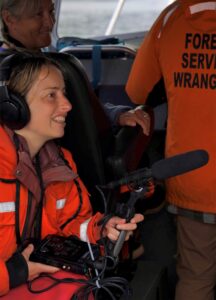
No matter if it’s smaller stations working together or formal networks, there’s a need for a statewide collaborative spirit, which many see in initiatives like the recently established Alaska Desk. The collaborative body, which received a $936,000 grant from the Corporation for Public Broadcasting to fund its operation and personnel expansion, will continue the rich history of public media partnerships throughout the state, allowing it to further its relationship from station to station and continue essential journalism around federal issues concerning the state. Lori Townsend, Chief Editor & Senior Vice President of Journalism at Alaska Public Media, is keenly aware of the weight this responsibility carries.
“The real culture, the real heart of Alaska exists in rural Alaska,” Townsend says. “We are going to be increasingly in the spotlight militarily, resource-wise, climate-wise […] There is an urgent need for us to help the nation and the world understand what’s happening here.” The Alaska Desk, set to add four reporters and three editors to the network, is designed to amplify these voices and cover the crucial issues facing the state, from climate change to resource development. “I think a lot about how we can work to help reporters feel more supported, especially if they’re working in very small newsrooms,” says Townsend.
This initiative builds on the success of past collaborations like the now-defunct Energy Desk. Townsend notes it laid the groundwork for many kinds of reporting and editorial relationships between stations. “It really helped us strengthen that and create more efficiencies,” she says. “The whole Alaska Desk concept was shaped completely all the way through with intense input from the stations.” Sweat is excited for what it could bring not just to her station, but to the entire consortium. “If we get a reporter here or if another station gets that reporter, it’s just going to improve it for everybody. It lifts the whole ship up because there’s one more person to be out there asking questions and interviewing people.”
As Alaska continues to face the challenges of its unique geography, climate, and economy, the importance of its public radio network only grows. These stations are not just broadcasting information; they are building bridges across vast distances, connecting people with their communities, their state, and the world beyond. The collaborative spirit that drives initiatives like CoastAlaska and the new Alaska Desk is a testament to the resilience and ingenuity of rural public radio in Alaska—a model of community service that other regions would do well to emulate.
“What keeps me at the station is just the service to community,” says Sweat.” It is a sentiment shared by public radio stations across the state, each playing its part in a much larger story—one of collaboration, commitment, and the enduring power of public media in the most remote corners of America.
Other Stories
noncomMUSIC Alliance: Live from Knoxville, WDVX’s ‘Blue Plate Special’ Is Appalachia’s Soundtrack
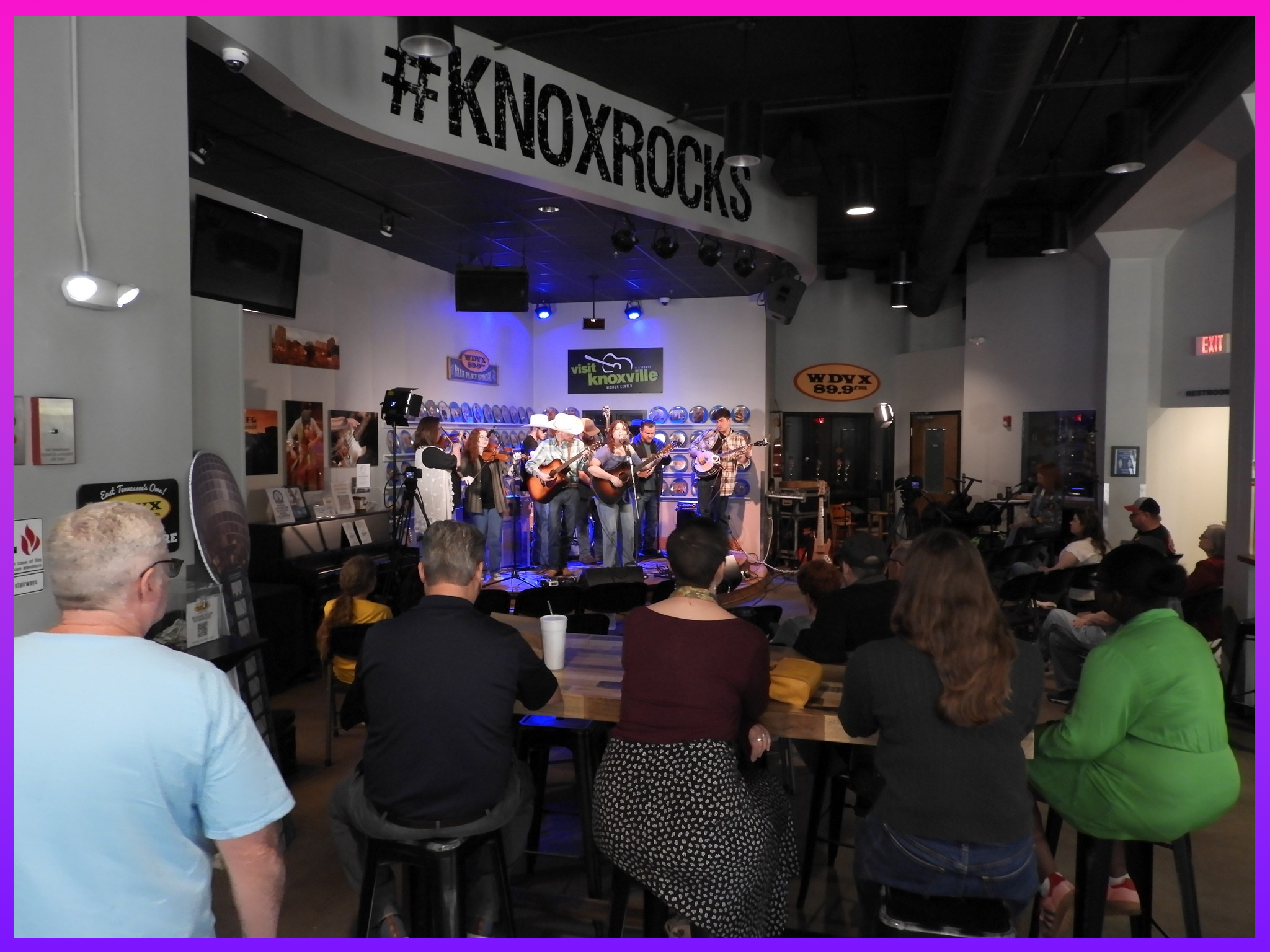
Alliance of Rural Public Media Sends Letter to Congress in Support of Public Media Funding

Inside Maine Public’s Mission to Connect Every Corner of the State
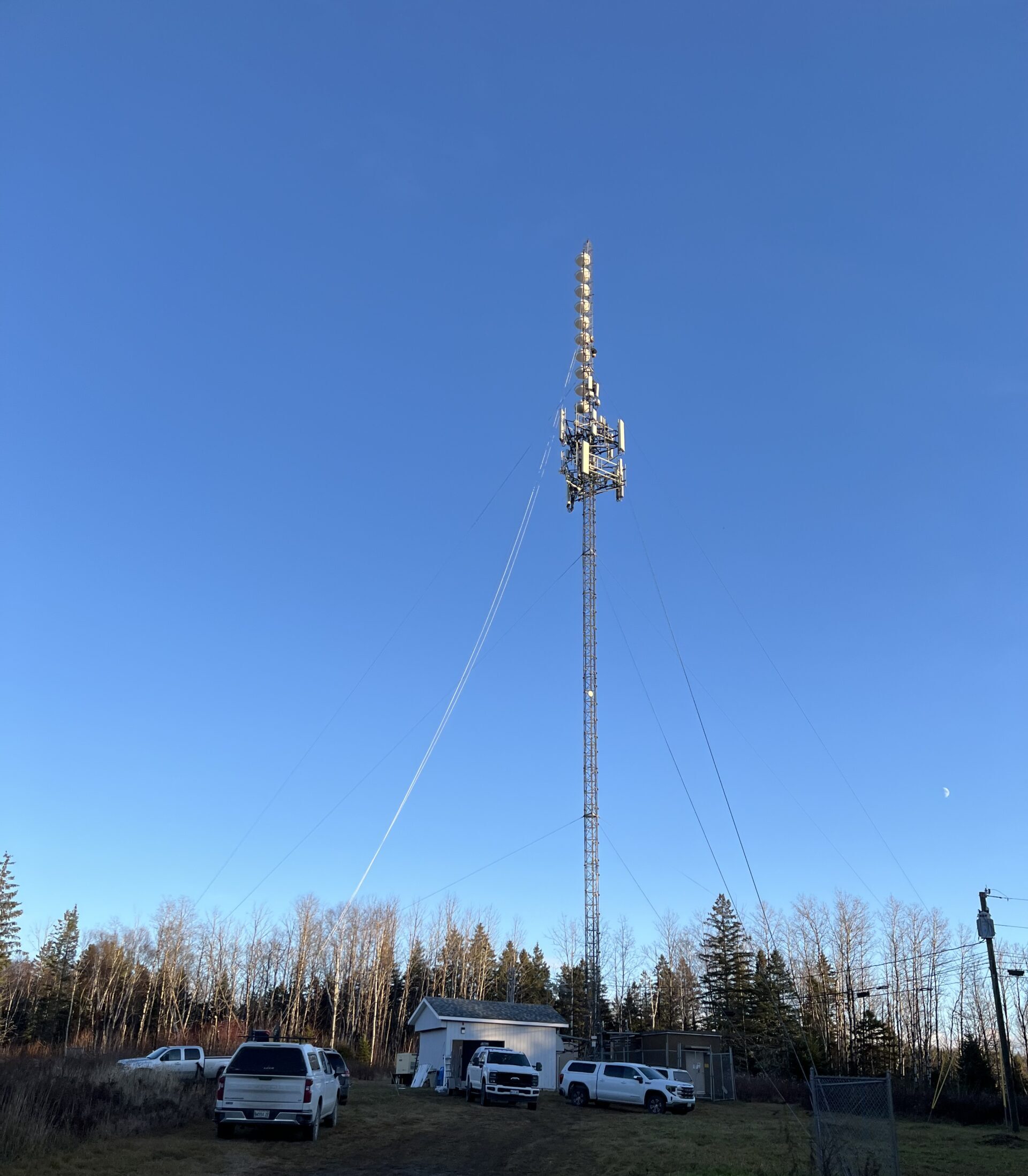
How a Kentucky Community Radio Station Found Its Home in an RV: Inside WMMT’s ‘Possum Den’
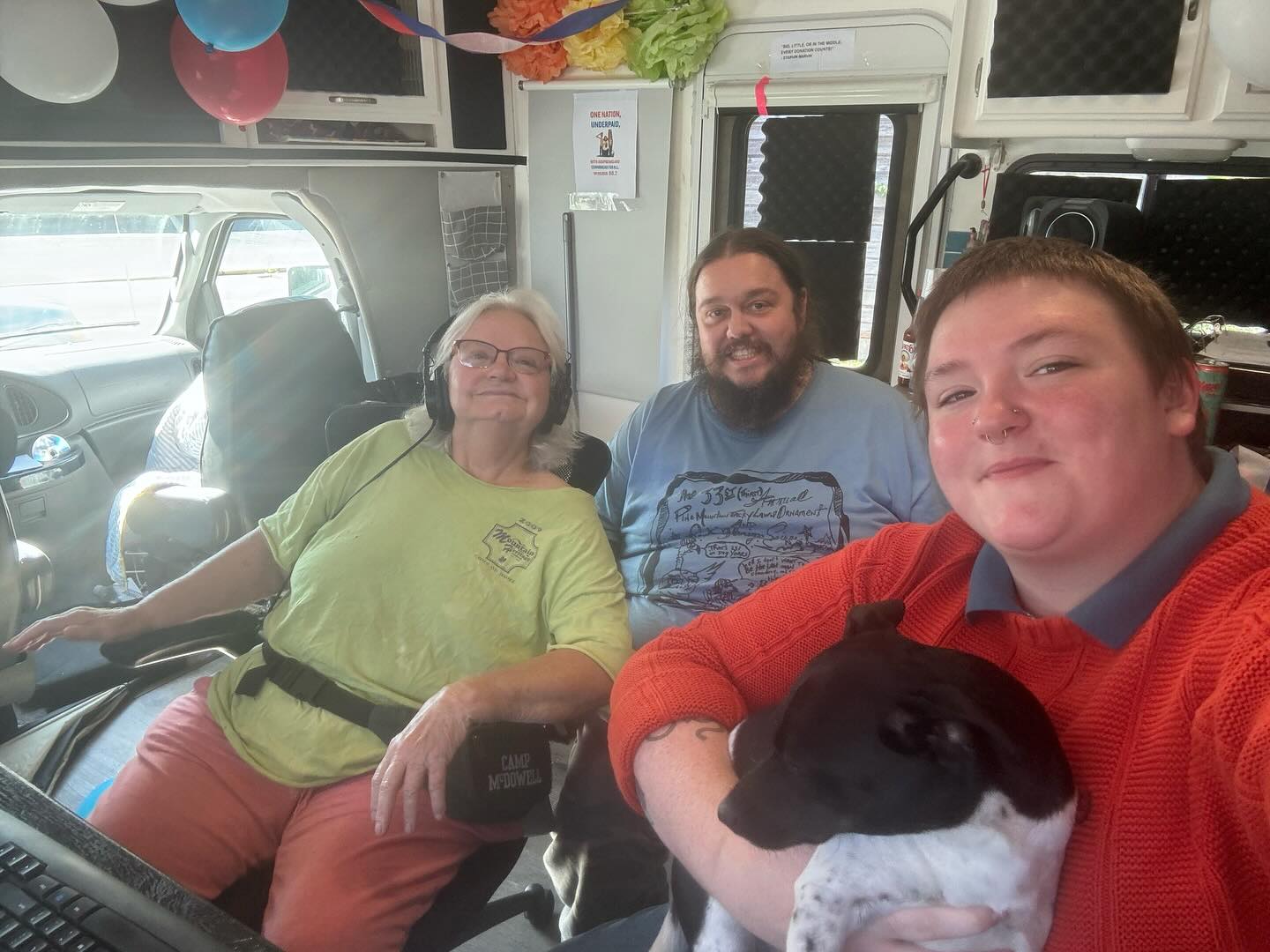
Farm-To-Airways: Harvest Public Media Is Telling the Heartland’s Stories
